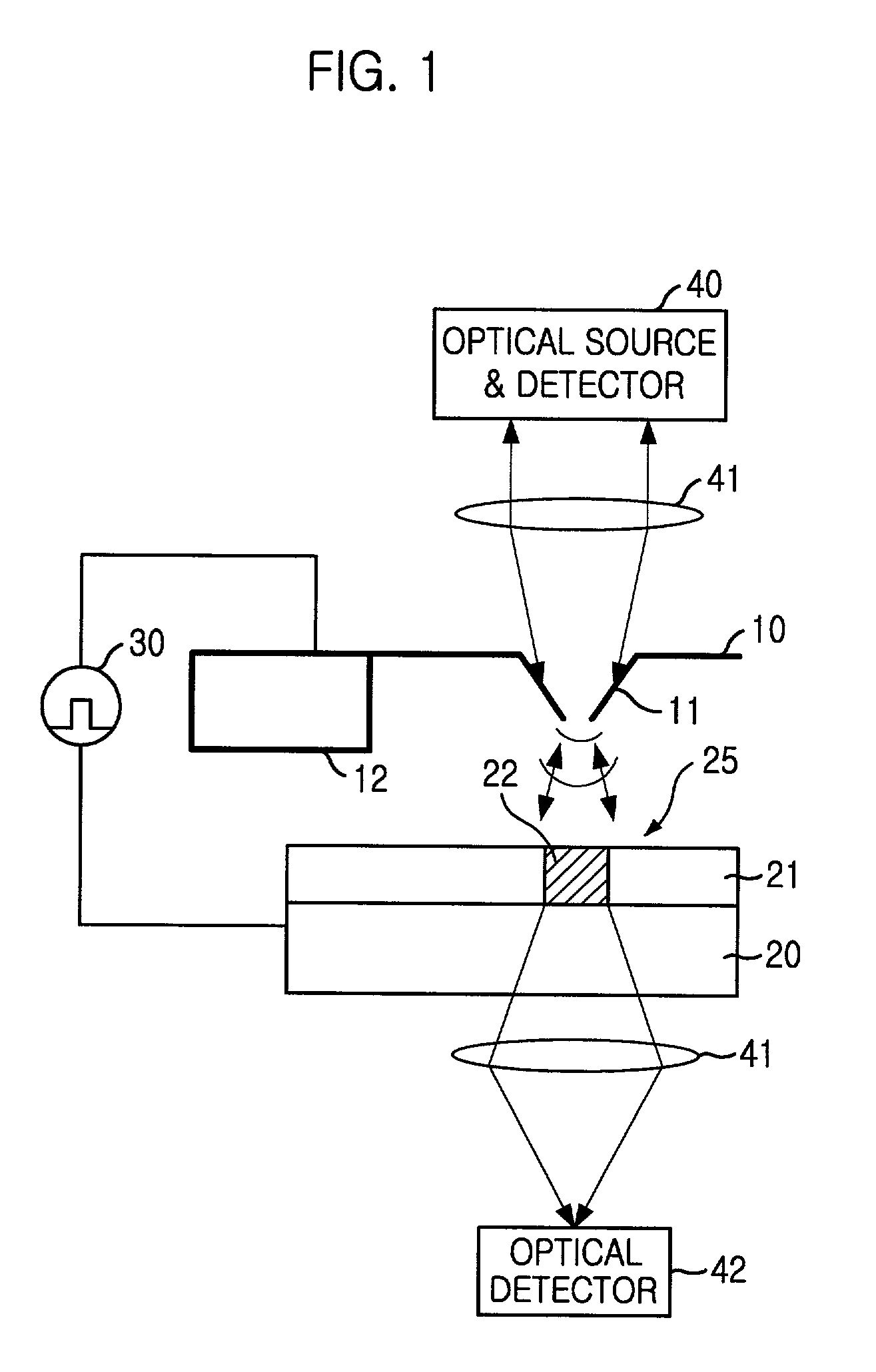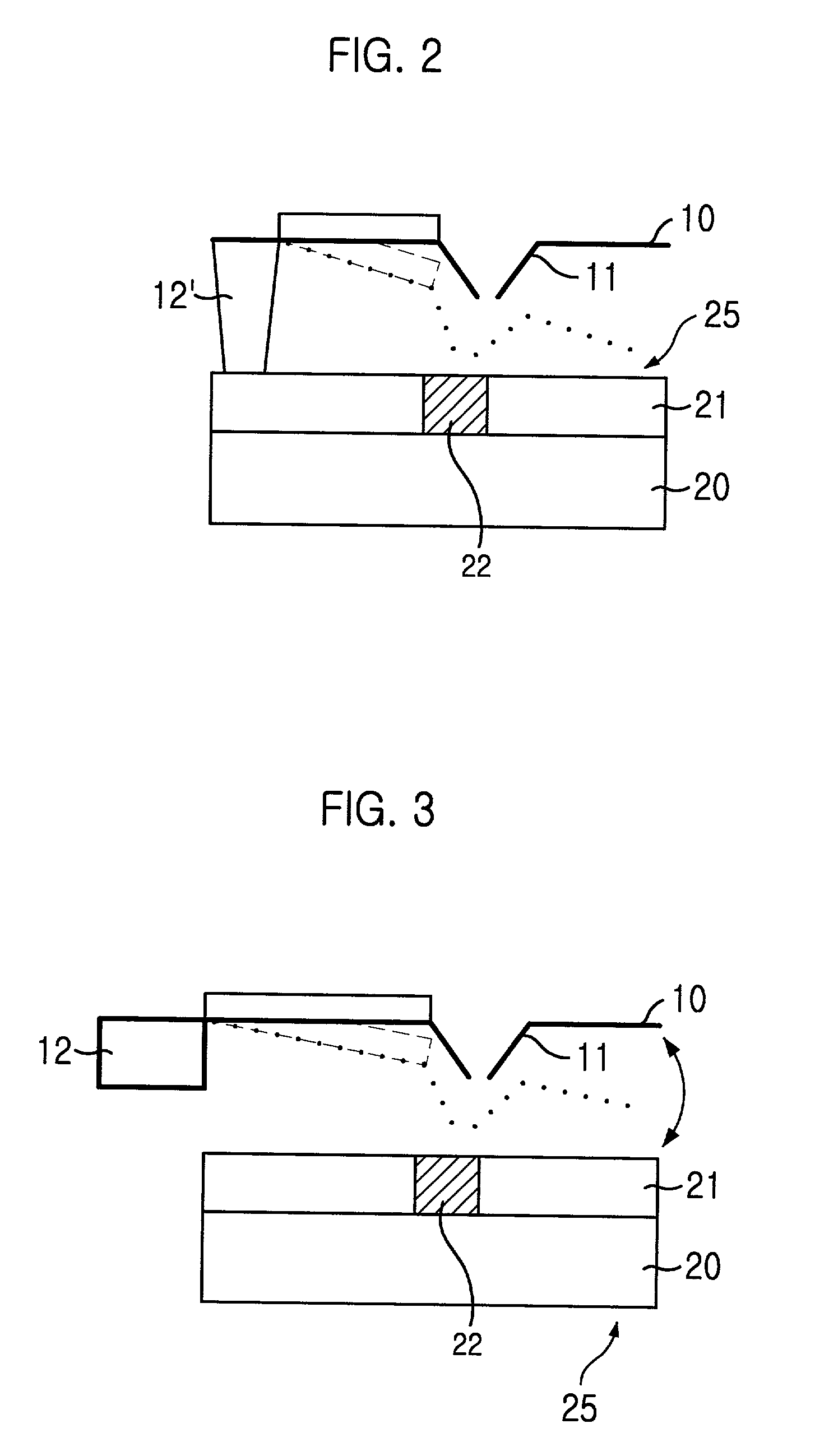Apparatus for recording and reproducing high-density information using multi-functional probe
a multi-functional, high-density technology, applied in the direction of optical radiation measurement, instruments, disposition/mounting of heads, etc., can solve the problems of limited physical size of recorded information, long recording time, and low throughput of optics
- Summary
- Abstract
- Description
- Claims
- Application Information
AI Technical Summary
Benefits of technology
Problems solved by technology
Method used
Image
Examples
first embodiment
[0029] FIG. 1 is a constructive diagram of a high-density information recording and reproducing apparatus using a multi-functional probe in the present invention.
[0030] In FIG. 1, a reference number 10 denotes a conducting cantilever, 11 a near-field optical aperture probe, and 12 a cantilever stage. A reference number 20 denotes a media substrate, 21 a recording layer, and 22 a recording area. A reference number 30 denotes a voltage pulse generator, 40 a light source (LD) and photo detector (PD), 41 lens, and 42 a photo detector (PD).
[0031] In a first embodiment of the present invention, information is recorded by a conducting cantilever 10 having a formation of a near-field optical aperture probe 11 which has a conduction, and the recorded information is read by the aperture probe 11. In this embodiment, the conducting cantilever 10 is approached to media 25, and a gap between the media 25 and the cantilever 10 can be controlled.
[0032] In order to perform an information writing / re...
fourth embodiment
[0048] FIG. 5 is a constructive diagram of a high-density information recording and reproducing apparatus using a multi-functional probe in the present invention.
[0049] A reference number 13 indicates a conducting protruding probe, and the rest reference numbers have the same construction as FIG. 1, thus have the same reference numbers.
[0050] In a case of FIG. 1, there may be a case that the near-field optical aperture structure can not perform its function well, since a wear and a damage of the probe 11 occur in writing the information. To settle such problem, as shown in FIG. 5, it is provided a separate-type double probe cantilever in which the conducting protruding probe 13 and the near-field optical aperture probe 11 are formed in order in one cantilever 10.
[0051] In order for an exact tracking or seeking necessary in the information writing / reading, an interval between two probes should be manufactured as a precision rate below tens of nanometers. Also, the AFM type probe shou...
PUM
 Login to View More
Login to View More Abstract
Description
Claims
Application Information
 Login to View More
Login to View More - R&D
- Intellectual Property
- Life Sciences
- Materials
- Tech Scout
- Unparalleled Data Quality
- Higher Quality Content
- 60% Fewer Hallucinations
Browse by: Latest US Patents, China's latest patents, Technical Efficacy Thesaurus, Application Domain, Technology Topic, Popular Technical Reports.
© 2025 PatSnap. All rights reserved.Legal|Privacy policy|Modern Slavery Act Transparency Statement|Sitemap|About US| Contact US: help@patsnap.com



